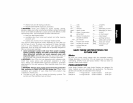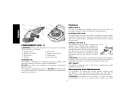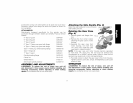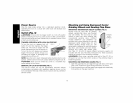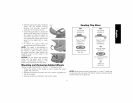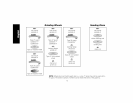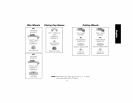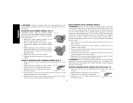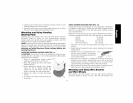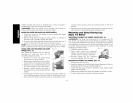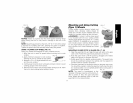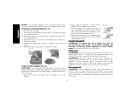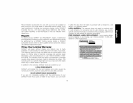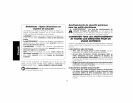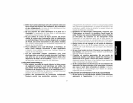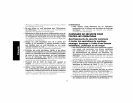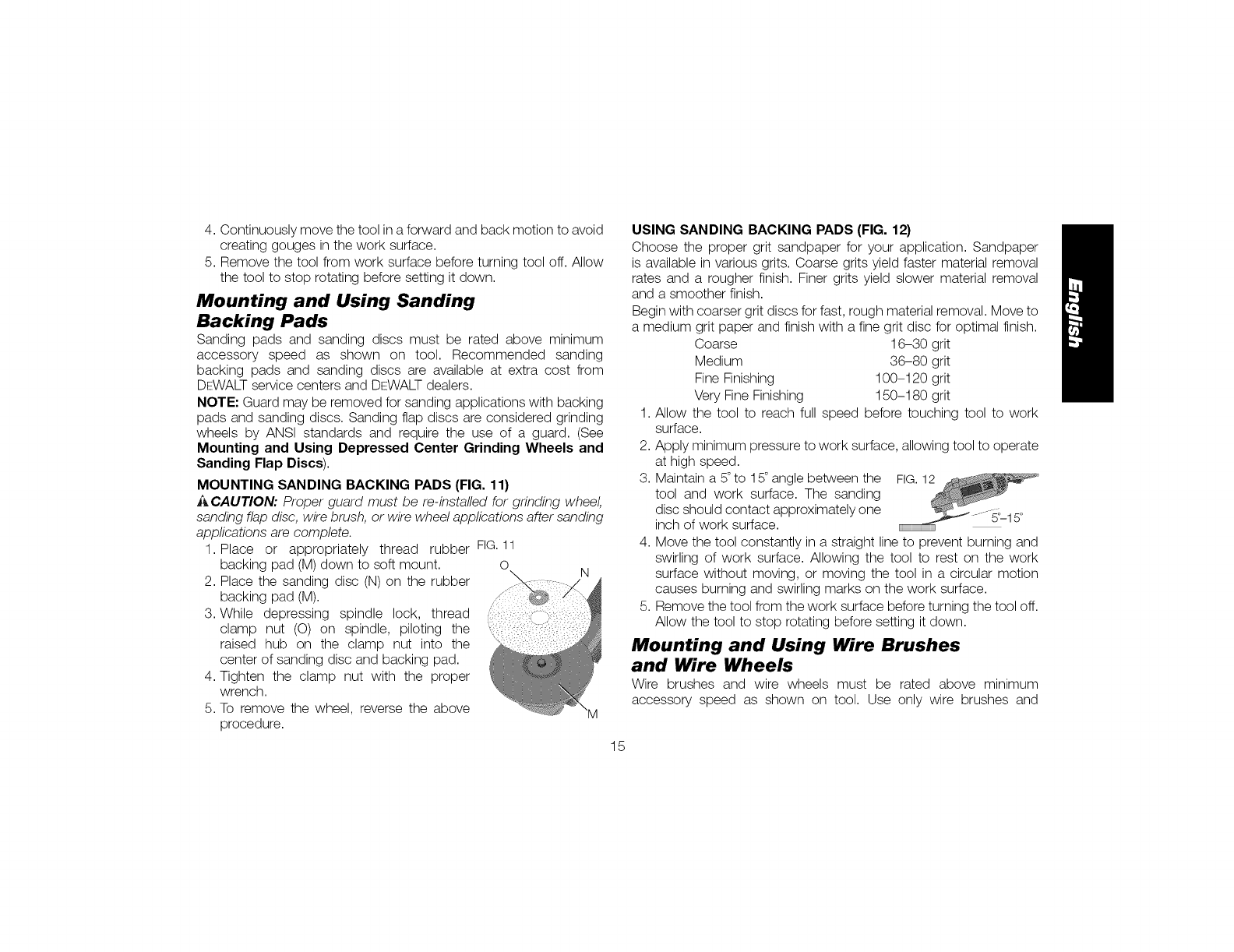
4.Continuouslymovethetoolinaforwardandbackmotiontoavoid
creatinggougesintheworksurface.
5.Removethetoolfromworksurfacebeforeturningtooloff.Allow
thetooltostoprotatingbeforesettingitdown.
Mounting and Using Sanding
Backing Pads
Sanding pads and sanding discs must be rated above minimum
accessory speed as shown on tool. Recommended sanding
backing pads and sanding discs are available at extra cost from
DEWALTservice centers and DEWALTdealers.
NOTE" Guard may be removed for sanding applications with backing
pads and sanding discs. Sanding flap discs are considered grinding
wheels by ANSI standards and require the use of a guard. (See
Mounting and Using Depressed Center Grinding Wheels and
Sanding Flap Discs).
MOUNTING SANDING BACKING PADS (FIG. 11)
i_ CAUTION: Proper guard must be re-installed for grinding wheel,
sanding flap disc, wire brush, or wire wheel applications after sanding
applications are complete.
1. Place or appropriately thread rubber FIG.11
backing pad (M)down to soft mount. O
N
2. Place the sanding disc (N) on the rubber
backing pad (M).
3. While depressing spindle lock, thread
clamp nut (O) on spindle, piloting the
raised hub on the clamp nut into the
center of sanding disc and backing pad.
4. Tighten the clamp nut with the proper
wrench.
5. To remove the wheel, reverse the above
procedure.
USING SANDING BACKING PADS (FIG. 12)
Choose the proper grit sandpaper for your application. Sandpaper
is available in various grits. Coarse grits yield faster material removal
rates and a rougher finish. Finer grits yield slower material removal
and a smoother finish.
Begin with coarser grit discs for fast, rough material removal. Move to
a medium grit paper and finish with a fine grit disc for optimal finish.
Coarse 16-30 grit
Medium 36-80 grit
Fine Finishing 100-120 grit
Very Fine Finishing 150-180 grit
1. Allow the tool to reach full speed before touching tool to work
surface.
2. Apply minimum pressure to work surface, allowing tool to operate
at high speed.
3. Maintain a 5°to 15° angle between the FIG.12
tool and work surface. The sanding
disc should contact approximately one
inch of work surface.
4. Move the tool constantly in a straight line to prevent burning and
swirling of work surface. Allowing the tool to rest on the work
surface without moving, or moving the tool in a circular motion
causes burning and swirling marks on the work surface.
5. Remove the tool from the work surface before turning the tool off.
Allow the tool to stop rotating before setting it down.
Mounting and Using Wire Brushes
and Wire Wheels
Wire brushes and wire wheels must be rated above minimum
accessory speed as shown on tool. Use only wire brushes and
15



